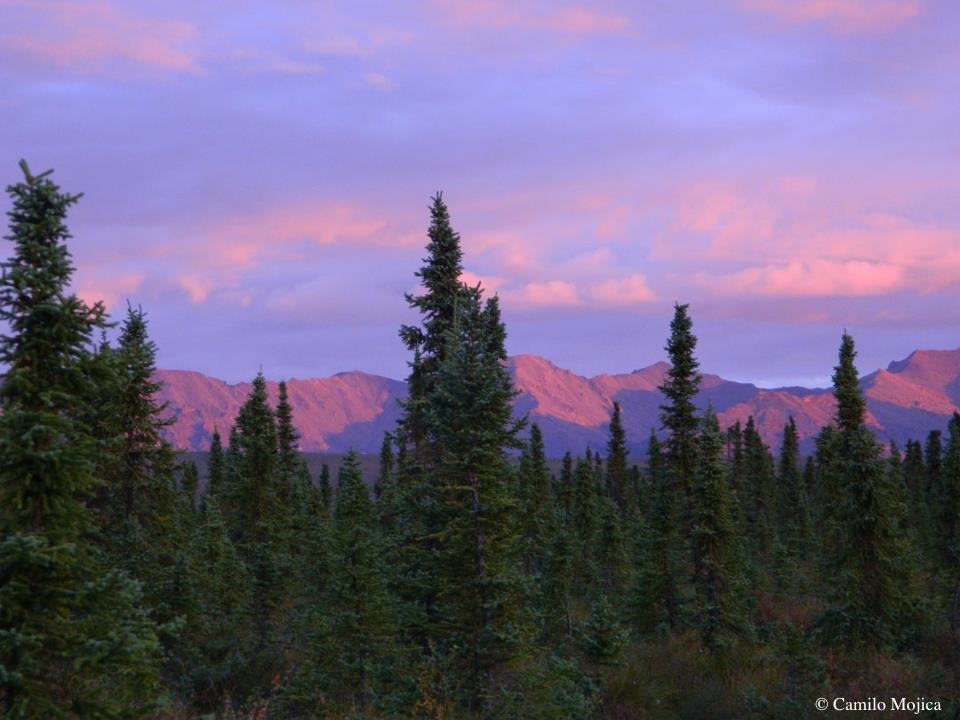
Climate-disturbance interactions as drivers of ecosystem and landscape change
Overview:
Vegetation composition and other structural aspects of the ecosystem and landscape modulate climate sensitivity of disturbances and associated ecosystem responses to those disturbances. For example, the distribution of conifers and hardwoods on the landscape influences both fire severity and the outbreak behavior of insects and pathogens, which influence the likelihood that the system will shift to a new resiliency cycle. However, changing disturbance regimes also influence the climate sensitivity of species, plant communities and landscape functional types. The impacts of permafrost thaw on soil water content, for example, strongly affect vegetation responses to climate warming. Moreover, important thresholds may be manifested through interactions between changing disturbance regimes. How increased fire severity is influencing the vulnerability of permafrost to thaw, and how insect and pathogen outbreaks will affect fire regimes and associated successional pathways are two prominent examples. Understanding the underlying mechanisms for these interaction pathways is essential for predicting whether climate-driven changes will contribute to ecosystem and landscape resilience or cause abrupt shifts to a new landscape mosaic with fundamentally different dynamics.
Question 1. How does vegetation composition and ecosystem structure affect the climate sensitivity of the fire regime? Vegetation flammability can amplify or override the direct influences of climate change on fire regime. Flammability is related to species composition, stand age, and environmental characteristics such as aspect and drainage. Hardwood tree species, for example, have historically acted as a negative feedback to fire severity because of high leaf water content and low flammability of litter. If increasing fire severity drives an expansion of hardwood or mixed spruce-hardwood stands across the landscape, then landscape flammability may decrease, reducing fire severity, increasing fire return time, and promoting landscape resilience. As climate warms, however, vegetation effects on flammability may decline, potentially weakening this negative feedback. Understanding the interactions between climate and vegetation flammability is crucial for predicting the future Alaska fire regime.
Question 2: What are the consequences of a changing fire regime for plant communities, ecosystems and landscapes? Plant-soil-microbial (PSM) feedbacks among black spruce, mosses, and microbial decomposition maintain deep organic soils in forests of interior Alaska. This internal feedback has been a key source of ecosystem resilience under the historical fire regime; moist, cold soils, poorly drained due to permafrost, burn at low severity and create a seedbed that favors the re-establishment of black spruce. In extreme fires, however, these soils can burn deeply and when less than 3 cm of organic soil remains after fire, hardwood tree species such as aspen and birch establish at high densities and catalyze a switch to an alternate successional trajectory, where spruce and hardwoods are co-dominant. Here, a new PSM feedback domain emerges, where warmer shallow organic soils are maintained by rapidly decomposing litter from highly productive hardwood species. Loss of permafrost is likely once this threshold is reached, further amplifying high rates of decomposition and decreasing accumulation of soil organic C.
Species are likely to respond individualistically to both the direct effects of disturbance, and to altered internal feedbacks, and these responses could have important impacts on biological diversity, species interactions such as those between plants and microbes or plants and herbivores, and the abundance of key plant species that themselves exert strong influences on ecosystem processes such as biological nitrogen fixation. Furthermore, shifts between spruce and spruce-hardwood mix feedback domains have large implications for ecosystem productivity and C storage, C and energy feedbacks to regional climate, and the goods and services that boreal ecosystems provide to humans. The goal of our proposed research in this section is to develop a mechanistic understanding of how an altered fire regime will affect the establishment of 1) key plant species and 2) successional trajectories, and 3) to identify the consequences of alternate successional trajectories for ecosystem and landscape processes.
This research is being conducted as part of the Bonanza Creek Long-Term Ecological Research (LTER) Program based in Fairbanks, Alaska.

Select Publications
|